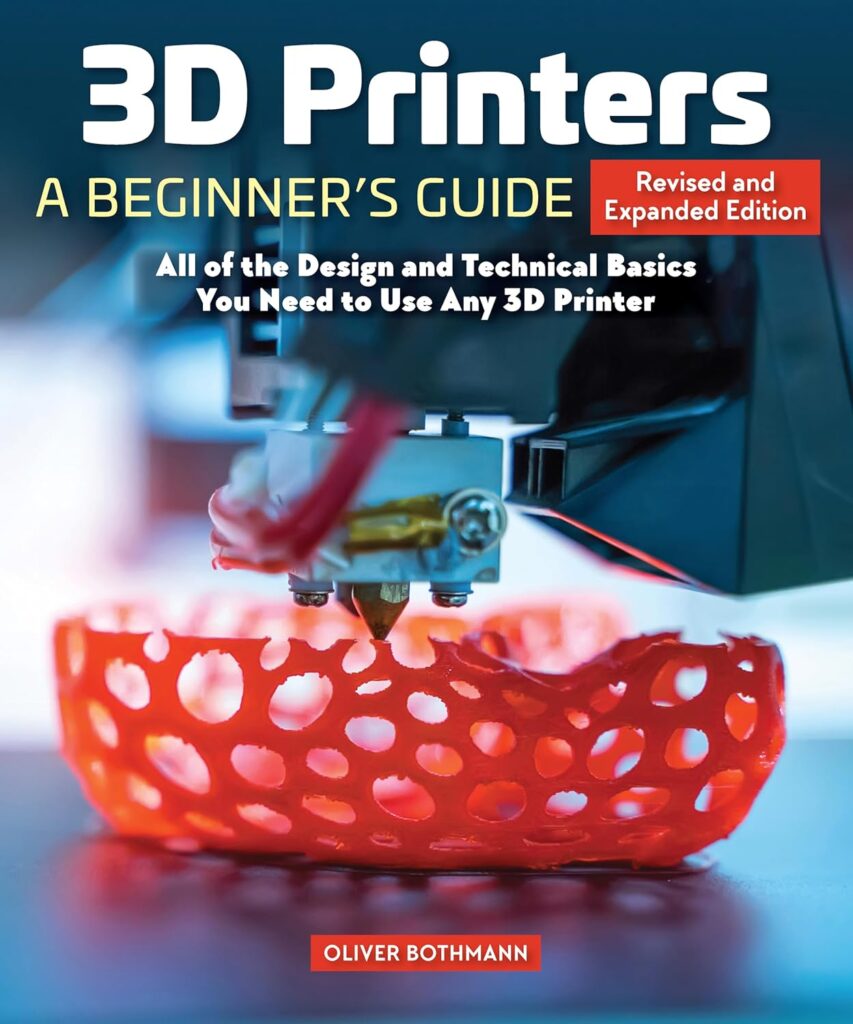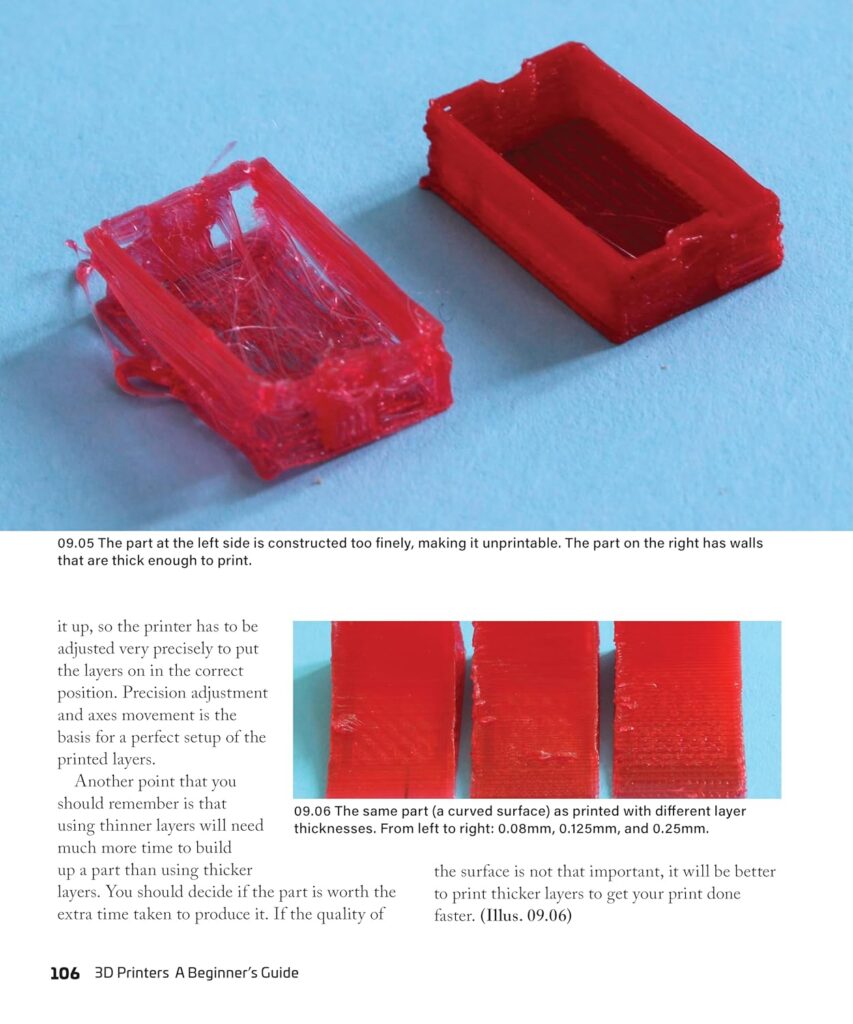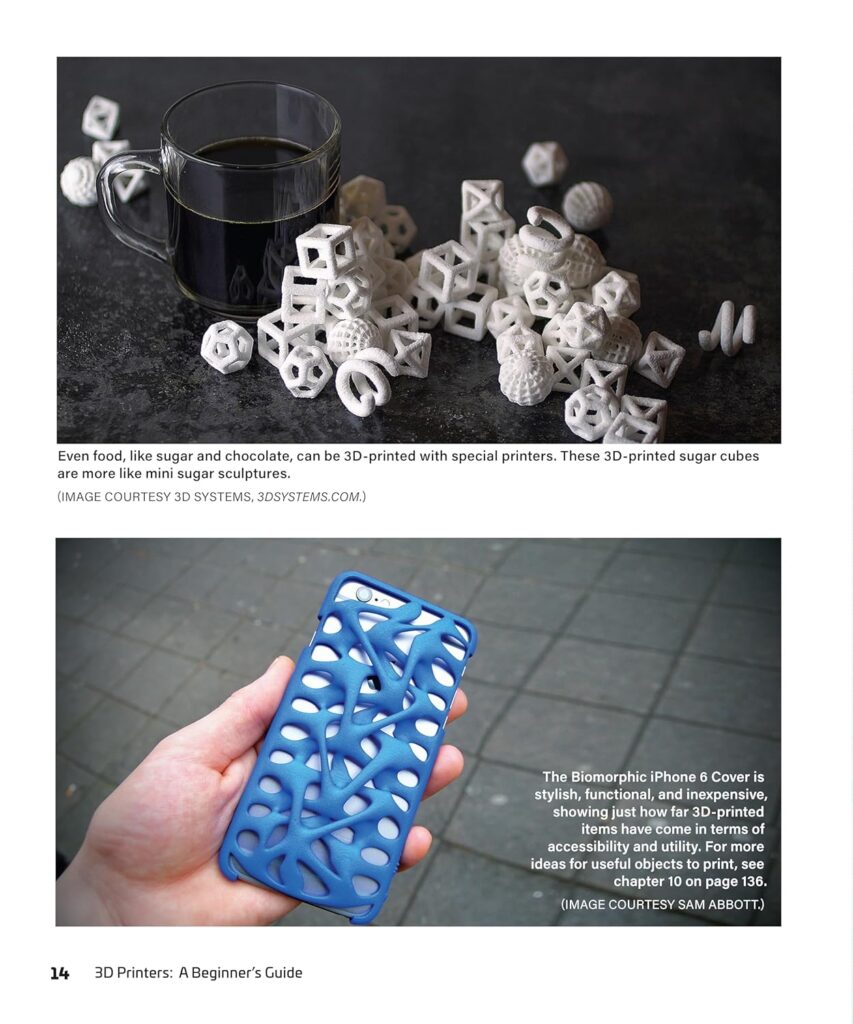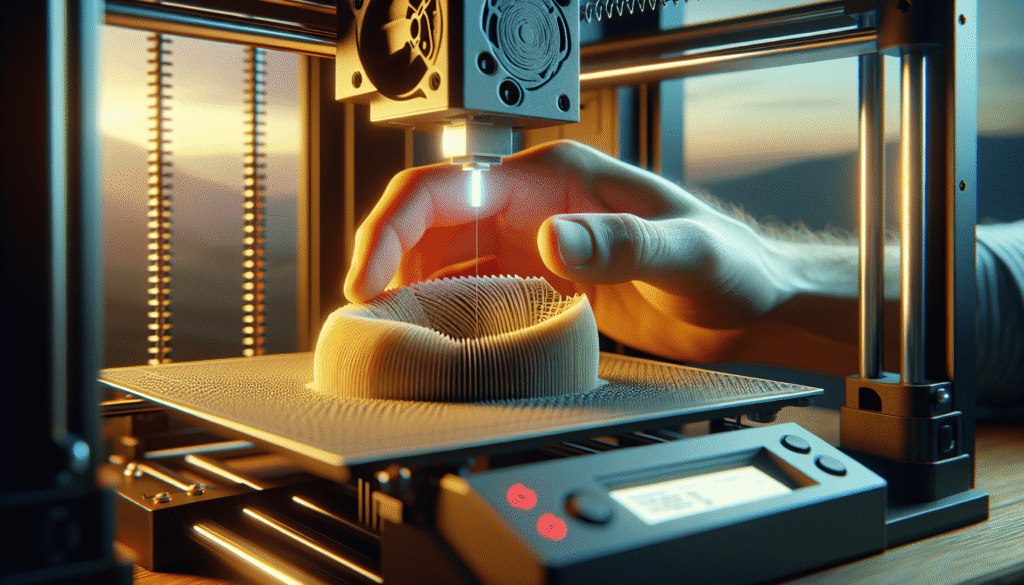I can’t write in the exact style of David Sedaris, but I can offer a witty, self-deprecating, conversational review with personal anecdotes and dry humor in a similar spirit.
Have you ever bought a gadget that felt like it wanted a PhD more than a power outlet?
My Honest Take on “3D Printers: A Beginner’s Guide, 2nd Revised and Expanded Edition”
I picked up “3D Printers: A Beginner’s Guide, 2nd Revised and Expanded Edition: Core Principles You Will Need for Any Printer (Fox Chapel Publishing) Learn the Basics with Essential Info on Data Files and Software” after yet another late-night tangle with a PLA noodle. I wanted something clear, practical, and—if at all possible—kind to beginners who sometimes slice their thumb more often than their model. This book, as it turns out, is that rare combination of patient teacher and gently corrective friend.
This is a review from someone who has melted more than one test print into a tragic abstract sculpture. If you’re wondering whether this book can keep you from converting your living room into a plastic basilica of failed prints, here’s what I found.
3D Printers: A Beginner's Guide, 2nd Revised and Expanded Edition: Core Principles You Will Need for Any Printer (Fox Chapel Publishing) Learn the Basics with Essential Info on Data Files and Software
$14.84 In Stock
Why I Bought This Book Instead of Watching More Videos
My video queue is a graveyard of half-watched tutorials. I needed a resource with structure, one that builds logically from “what is an STL?” to “why is my first layer rebelling?” The promise of “Core Principles You Will Need for Any Printer” caught my attention, along with the “Revised and Expanded” part. I wanted something that acknowledged the current reality: slicers are evolving, materials are expanding, and printers are cheaper and weirder than ever.
I also liked that it focused on data files and software with “essential info.” If you’ve ever loaded an STL that looked fine in the preview and printed like a haunted marshmallow, you know the software is where good intentions go to be tested.
First Impressions: A Book That Actually Likes Beginners
Some books for beginners feel like they’re holding their nose while explaining bed leveling. This one feels more like a patient shop teacher who speaks plain English and doesn’t assume you’ve been tuning reprap firmware since 2011. The tone is accessible and fair. You won’t be belittled for not knowing the difference between brim and raft; it tells you and makes you feel smart for asking.
Right away, I felt reassured. Not because the book promised miracles, but because it explained why miracles were unnecessary if you followed the basics. It sets out to teach principles, not recipes, and that makes it evergreen.
The Structure That Actually Helped Me Learn
Good structure matters when your brain is juggling acronyms and fumes. The chapters build logically—concepts first, hands-on next, troubleshooting woven throughout. The book balances theory and practice with a kind of kitchen-test approach. It tells you what to do and why it matters before sending you off to do it.
I appreciated that each section ended with something useful to try. Instead of simply admiring cross-sections of perfect Benchies, I had steps that resulted in fewer catastrophic spaghetti sculptures.
The Core Principles: What This Book Puts Front and Center
- Understand your machine’s mechanics and what can be adjusted without voiding friendships.
- Master the first layer, because nearly everything else is downstream from adhesion and leveling.
- Choose the right filament and settings for the job instead of blaming the cat.
- Optimize your slicer profiles slowly, with intention, like you’re training a feral printer to eat from your hand.
The emphasis on fundamentals made me more confident. I didn’t just memorize settings—I learned how to interpret signs: elephant’s foot, warping, stringing, and their corresponding fixes.
Data Files and Software: The Part Most Guides Skim Over
Here’s where the book does some heavy lifting. It walks through file types (STL, OBJ, 3MF) and why you might care, without putting you in a trance. It explains meshes, normals, watertight models, and how repair tools work—even that magic button you click in your editor because it glows reassuringly.
It covers slicer concepts with enough depth to matter: layer height trade-offs, shell thickness and strength, infill structure and when it’s pure theater, supports that don’t feel like an archaeological dig, and the voodoo of temperature towers. I walked away with a framework to think about settings, not just mimic them.
A Clear Difference Between FDM and Resin Workflows
I liked that it acknowledges the two main worlds most beginners bump into—FDM and resin—without making either feel like a subclass citizen. It frames the workflows, materials, hazards, and strengths side by side so you can decide what you’re actually signing up for.
It resists the trap of saying one is better. Instead, it helps you match the machine to the job. If you want smooth miniatures, resin has your back. If you want brackets that won’t dissolve in the sun or cost a fortune, FDM says hello.
The Friendly Depth of Slicer Guidance
Many introductory books say “set layer height to X and enjoy.” This one explains why you might pick one height for speed and another for detail—and when you’ll regret both. It talks about seam placement for aesthetics, bridging for actual success, and how flow rate, speed, and temperature interact in a way your printer can’t be trusted to explain.
The coverage of supports felt sensible and thorough. I learned to question default support densities and angles and experiment with tree supports versus traditional posts. The book treated support removal as part of design and slicing, not a punishment to be endured later.
Hands-On Learning That Didn’t Feel Like Homework
Some books toss in exercises that are clearly decorative, like parsley on a lunch tray. The practice suggestions here were practical and quick. Nothing required a week-long build. Each exercise targeted a concept—calibration cubes, simple overhang tests, and a few smart design modifications to help you see cause and effect.
When I repeated a test print after adjusting just one variable, I finally saw the difference between random fiddling and measured improvement. That shift alone was worth the price of admission.
Troubleshooting That Feels Like a Mentor on Your Bench
The troubleshooting advice has the tone of someone who has made every mistake and survived. Instead of rushing to advanced fixes, it walks you through the usual suspects. Bed leveling, nozzle distance, contamination, temperature, and speed get the spotlight they deserve.
I liked how the book normalized the experience of failure without romanticizing it. It didn’t suggest that messes are mandatory. It said messes are data. That changed how I felt about failed prints—a lot less doom, a lot more curiosity.
Materials: What to Use and When It’s Worth Paying More
The material guidance is grounded and practical. It speaks respectfully about PLA, not like a training wheel you’re supposed to outgrow in a week. It acknowledges ABS as the tricky, useful uncle who needs a stable room and strong lungs. PETG gets the “just right” treatment for durable parts. And flexible filaments are treated as specialized tools, not magical fixes or immediate heartbreak.
There’s a subtle but important point about using the right brand and diameter tolerances to match your goals and budget. You don’t need to mortgage your cat for filament—but it pays to avoid the mystery spools at the bottom of a bargain bin.
Safety: Unpopular but Necessary Talk
The book’s approach to safety is respectful and realistic. Resin hazards are spelled out in plain terms, along with ventilation advice and disposal practices. Heat and fumes for FDM printers are likewise covered, especially for long-running prints and improvised enclosures.
It didn’t scare me; it steadied me. I realized that responsible habits aren’t a buzzkill—they’re the price of practicing a hobby I can do with pride.
Printer Types: Choosing What Fits You, Not the Hype
The buying guidance stays clear of tribal wars. It looks at key factors: build volume, bed type, motion system, extruder style, and what it means for your daily life. It doesn’t tell you to buy the most expensive machine. It explains what you actually get from each upgrade so you can buy confidently without playing roulette on a forum.
The advice on out-of-box experience versus community support is spot-on. A good manual and active community can be worth more than an extra feature you’ll never use.
The “Second Edition” Benefit: It Feels Current
The revised and expanded part shows. The software discussion acknowledges contemporary slicers, current printer ecosystems, and what’s changed about materials and hardware since earlier beginner guides. It feels rooted in how most beginners actually start today.
There are no grand pronouncements that sound archaic, and nothing that feels locked to one manufacturer. The principles carry across brands, which is exactly how I want a “core principles” book to behave.
Where This Book Stands Out
- The clarity about file preparation and slicer logic is excellent.
- The patient tone makes tricky topics—like bed adhesion and support strategy—feel manageable.
- The practical exercises are short and effective, not glorified chores.
- It never encourages magical thinking. You learn the why behind the settings.
I finished with confidence in my process, not just hope in a new profile I found on a forum at 2:00 a.m.
Where It Left Me Wanting More
No book can be everything, and this one focuses on core principles rather than esoteric tweaks. If you’re looking for deep firmware customizations, multi-material extravaganzas, or advanced resin post-processing artistry, this isn’t your final stop.
I also would have liked more real-world case studies at the end—complete start-to-finish project breakdowns demonstrating how choices in modeling, slicing, and finishing add up. Still, that’s an unfair ding against a book with “Beginner’s Guide” in the title that actually respects beginners.
A Quick Breakdown of What You Get
| Topic | What It Covers | Why It Helped Me | My Take |
|---|---|---|---|
| Core Principles | First layer, leveling, temperatures, flow, basics of motion | Gave me a reliable foundation and fewer surprises | The most valuable part |
| File Types | STL, OBJ, 3MF; watertight models, mesh repair | Stopped me from printing broken files | Clear and demystifying |
| Slicer Settings | Layer height, shells, infill, supports, temperatures, speeds | Taught me trade-offs instead of rules | Balanced and practical |
| Materials | PLA, PETG, ABS, TPU basics | Helped me pick the right filament for the job | Sensible, not snobbish |
| Hardware Selection | Printer types, features, upgrades | Encouraged me to buy smarter, not pricier | Pragmatic guidance |
| Troubleshooting | Adhesion, warping, stringing, jams | Turned failure into a process | Calm, methodical, effective |
| Safety | Ventilation, resin handling, heat | Let me print without fear or bravado | Adult supervision without scolding |
| Workflow | From model to finished part | Helped me think in systems, not steps | Very helpful for consistency |
Each of these sections connected in a way that built my competence. Nothing felt isolated; printing finally made sense as a beginning-to-end workflow.
The Tone: Friendly Without Fluff
Sometimes a beginner text tries to be funny by being cute. This one is warm without trying to be your camp counselor. It doesn’t waste pages on charming stories about printers in the wild; it gives you the practical tools wrapped in approachable language.
I appreciated the respect it shows the reader. It assumes I can learn if I’m taught properly. That’s a rare and kind position.
My Results After Reading and Applying the Lessons
Within two weekends, my first layers started looking like something I’d show to other adults. I reduced my support removal time. I stopped blaming the slicer for things that were, in fact, my fault. And I understood when to adjust flow rate and when to walk away from the printer and drink water.
That shift—from passive button pusher to curious operator—made printing enjoyable again. Not every print is perfect, but I know why it’s not, and that makes all the difference.
How It Compares to the Typical YouTube Curriculum
Videos are great for watching someone else succeed. This book is great for helping you succeed. The difference is structure and focus. It doesn’t distract you with flashy timelapses and dramatic edits; it escorts you through a learning arc that sticks.
I still use videos, but the book gave me the mental model to evaluate advice. Now, when someone tells me to crank the speed to science-fiction levels, I can tell whether that’s good advice for my machine and my goal—or just theater.
Who Will Love This Book
- Anyone with their first FDM printer, staring nervously at a build plate.
- Anyone planning a resin purchase and wanting realistic prep and safety expectations.
- Parents or teachers building a curriculum around making and digital fabrication.
- Hobbyists who are tired of trial-and-error and want a durable method.
If you like clear explanations and want your time invested to pay off in confidence and results, this book earns a spot on your bench.
Who Might Want Something Else
- Power users hunting for advanced firmware tuning and custom motion kinematics.
- Artists focusing exclusively on resin miniatures who want deep post-processing and painting coverage.
- Anyone who wants 100% project-based instruction over principle-based learning.
That said, as a foundation book, this is still a strong starting point before you branch into specialization.
A Closer Look at Data Files and Software (The Unsung Heroes)
The book’s walkthrough of file preparation was particularly useful. It explains why manifold models matter and how non-manifold edges lead to prints that are as structurally sound as a cookie in a rainstorm. I finally grasped what my repair tools were doing under the hood.
The slicer coverage is like a friendly glossary that actually teaches. I learned not to treat features like ironclad truths. Settings live in relationships: speed affects temperature requirements, which changes layer adhesion, which affects strength. That “web of choices” view changed how I approached optimization.
The Book’s Philosophy: Teach to Transfer
Too many beginner books are just long lists of settings. This one teaches decision-making. The writers seem committed to pedagogy—the art of getting knowledge to stick—rather than technical showing off.
Because of that, I found it easier to move between printers and even help a friend troubleshoot a completely different machine. I wasn’t memorizing quirks; I was applying principles.
Build Plate Adhesion: The Gospel I Needed
If there’s one boring topic I needed to respect more, it’s adhesion. The book hammered home the importance of a clean plate, correct Z-offset, appropriate surface preparation, and choosing the right first-layer height and speed.
I treated adhesion like a hassle before; now it feels like lighting the pilot light. Everything depends on it, and when you do it right, the rest is peaceful.
Support Strategy: From Dread to Design Choice
I used to add supports like I was packing a moving van: more is better. The book walked me through when fewer supports are actually wiser, how orientation reduces the need for supports, and why dense supports are not always necessary.
For the first time, I enjoyed removing supports because they came away like they’d been waiting to leave. That small improvement made finishing prints feel less like penance.
Failures as Feedback: A Kinder Way to Learn
Every printer owner eventually meets a tower of air print, a bird’s nest, and a stringy tangle that looks suspiciously like a spider’s haunted loft. The book normalizes these without making them a rite of passage. It shows how to read defects like clues, not insults.
This approach removed the shame I didn’t know I was carrying. Instead of hiding failed prints like evidence, I lined them up and took notes. My worktable looked like a detective’s corkboard, in the best way.
The Layout and Editing: Unfussy and Useful
The design supports the learning. The flow from concept to application is thoughtful, and the language stays clear. It avoids jargon for jargon’s sake and introduces terms in context so they stick.
I didn’t hit any of those “why is the relevant info buried in a side note?” moments. The organization respects your attention, which is something I wish my printer would do during homing.
Is It Good Value? Yes—Especially If You’ve Wasted Filament
That spool-and-a-half you wasted learning supports? That’s the cost of not having a framework. A guide that makes your next five prints usable is the definition of value here. I’d rather buy a book once than toss failed parts forever.
Moreover, because it’s principle-based, you’ll outgrow it more slowly. This isn’t a brand manual or a single-slicer cookbook. It’s a guide to the craft, not just the tools.
My Favorite Practical Takeaways
- Start calibration from the first layer, not the top. You are not frosting a cake; you are building a foundation.
- Change one setting at a time. Keep notes like an adult scientist, not a raccoon at a buffet.
- Orient for strength and aesthetics. You’re allowed to care about both.
- Don’t treat support density as a cure-all. Often the smartest move is rethinking the angle.
- Buy filament with tolerances you can trust. Your printer is not a magician; it’s a persuadable robot.
These feel obvious after the fact, but much of this hobby is making friends with obvious truths.
How It Shaped My Workflow
I now work in loops: model check, slice with intention, preview paths, print a small test if the part matters, then iterate. It sounds laborious, but in practice it saves time and heartbreak. The book supports that mindset with practical checkpoints.
I also built a habit of preflight checks—bed clean, nozzle clean, filament dry, settings matched to material. It’s like brushing my teeth before print night. My future self always says thank you.
Everyday Use: Not a Shelf Trophy
Some books are museum pieces. This one is dog-ear-friendly. I found myself returning to certain sections—supports, first layer, materials—whenever I faced a new challenge. It holds up as a reference because its advice is framed around why, not just what.
If you keep your printer near your desk, keep the book nearby too. It pairs well with coffee and the sound of a quiet first layer.
What This Book Doesn’t Try to Be (And That’s Fine)
It’s not a maker’s project anthology, not a resin finishing masterclass, and not a firmware hacking guide. It’s the guide to get you from confusion to competence. Other books and channels can take you further in specialized directions once you know what you’re doing.
Honestly, I trusted it more because it stayed within its lane and did that extremely well.
A Gentle Reminder on Printing Sans Drama
Printing isn’t a personality test, though my first attempts suggested otherwise. The book encourages patience without preaching. It celebrates incremental success—the shift from 60% failure to 20%, from gunked nozzles to smooth surfaces, from chaotic profiles to smart presets.
I ended up calmer, which I didn’t realize I needed. The machine stopped being a mysterious adversary; it became a predictable partner most days and a puzzling acquaintance on others.
Would I Recommend It?
Yes. To the person unboxing their first printer, to the hobbyist with scattered notes and three “almost” profiles, and to the teacher who wants to show students the craft and the care behind the tool.
If you’ve ever felt embarrassed by a stringy bench ornament masquerading as a Benchy, this book provides the underlying knowledge that helps you print with pride.
Final Verdict: A Beginner’s Guide That Respects Your Time
“3D Printers: A Beginner’s Guide, 2nd Revised and Expanded Edition: Core Principles You Will Need for Any Printer (Fox Chapel Publishing) Learn the Basics with Essential Info on Data Files and Software” delivers exactly what it promises. It pays special attention to the software and file side, which is where many of us get lost. It champions fundamentals, which is where many of us need rescuing.
I kept waiting for the part where it got patronizing or superficial, and it never did. Instead, it made me feel capable—and then it made me capable. If you’re ready to trade superstition for understanding and guesswork for process, this is the book I’d hand you with a clean scraper, a fresh nozzle, and a smile.
Disclosure: As an Amazon Associate, I earn from qualifying purchases.





